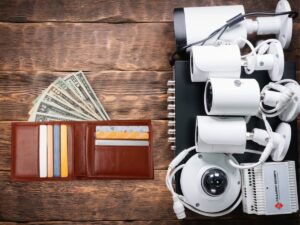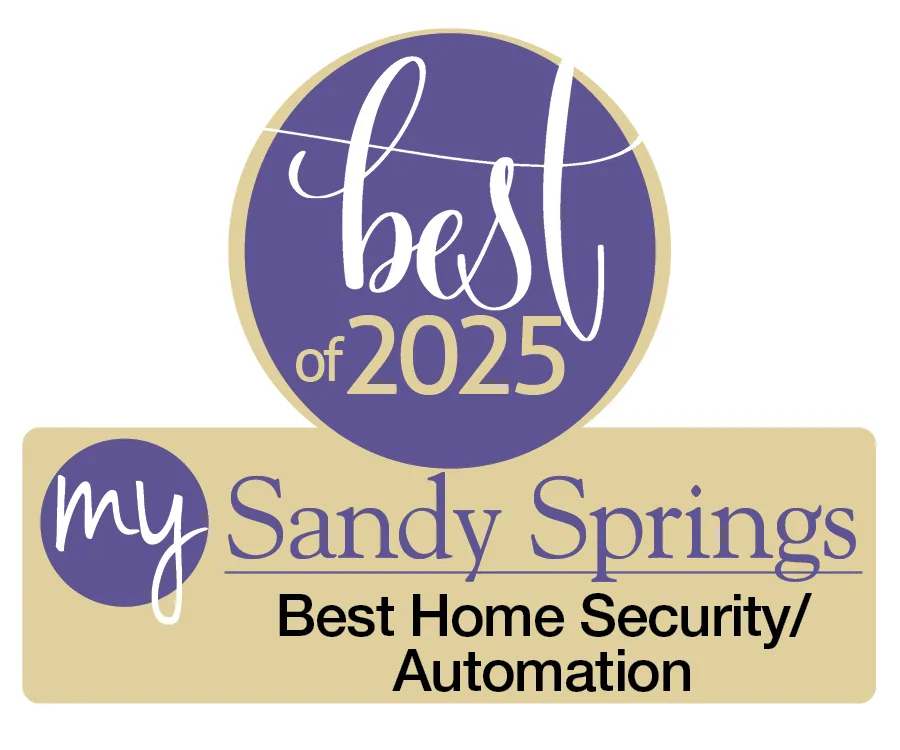In today’s world, home security is more important than ever. With the rise in crime rates and the increasing number of home burglaries and break-ins, it is crucial to invest in a comprehensive home security system to protect your loved ones and your property. A home security system consists of various components that work together to provide comprehensive protection. In this article, we will explore the key components of a home security system and discuss their importance in keeping your home safe.
Key Takeaways
- Home security is essential in today’s world to protect your family and belongings.
- A comprehensive home security system includes security cameras, alarms and sensors, smart locks, motion detectors, and monitoring services.
- Security cameras are a vital component for keeping an eye on your home and deterring intruders.
- Alarms and sensors can alert you and authorities of any potential break-ins or suspicious activity.
- Smart locks and monitoring services can enhance your home security with technology and provide 24/7 surveillance.
The Importance of Home Security in Today’s World
Statistics show that home burglaries and break-ins are on the rise. According to the FBI, there were approximately 1.2 million burglaries in the United States in 2019 alone. These break-ins not only result in financial losses but also have a significant emotional impact on the victims. The sense of violation and loss of personal safety can be traumatic and long-lasting.
Investing in a home security system can provide peace of mind and a sense of security. Knowing that your home is protected by a comprehensive security system can help alleviate anxiety and fear. It acts as a deterrent to potential burglars and provides a layer of protection for your loved ones and your belongings.
Key Components of a Comprehensive Home Security System
A comprehensive home security system consists of several key components that work together to provide maximum protection. These components include security cameras, alarms and sensors, smart locks, motion detectors, monitoring services, and fire safety components.
Security Cameras: A Vital Component for a Safe Home
Security cameras are an essential component of any home security system. They act as a deterrent to potential burglars and provide valuable evidence in case of a break-in. There are different types of security cameras available, including indoor cameras, outdoor cameras, and doorbell cameras.
Indoor cameras can be placed strategically inside your home to monitor activity in different rooms. Outdoor cameras can be installed around the perimeter of your property to monitor the exterior. Doorbell cameras, also known as video doorbells, allow you to see and communicate with visitors at your front door, even when you’re not home.
Security cameras come with various features, such as high-definition video quality, night vision, motion detection, and remote viewing capabilities. These features allow you to monitor your home in real-time and receive alerts on your smartphone or other devices when suspicious activity is detected.
Alarms and Sensors: Protecting Your Home from Intruders
Alarms and sensors are another vital component of a comprehensive home security system. They work together to detect and alert you of a break-in. Alarms can be installed on doors and windows to detect unauthorized entry. When a door or window is opened while the alarm is armed, it triggers a loud siren to scare off intruders and alert you and your neighbors.
Sensors can be placed throughout your home to detect motion or changes in temperature. When motion is detected in an area where it shouldn’t be, such as a hallway or living room during the night, the sensor sends a signal to the alarm system, which then triggers the alarm.
Having a loud alarm is crucial as it not only scares off intruders but also alerts you and your neighbors of a potential break-in. The noise can attract attention and prompt someone to call the authorities.
Smart Locks: Enhancing Your Home Security with Technology
Smart locks are an innovative addition to any home security system. They provide convenience and enhanced security by allowing you to lock and unlock your doors remotely using a smartphone app or a key fob. Smart locks can also be integrated into a comprehensive home security system, allowing you to control access to your home from anywhere.
Smart locks eliminate the need for traditional keys, which can be lost or stolen. Instead, you can provide access to your home to family members, friends, or service providers through temporary or permanent digital keys. You can also receive notifications on your smartphone when someone locks or unlocks the door, providing you with peace of mind and control over who enters your home.
The Role of Motion Detectors in Home Security
Motion detectors are an essential component of a comprehensive home security system. They work by detecting movement in specific areas of your home and triggering an alarm or alerting you of suspicious activity. There are different types of motion detectors available, including passive infrared (PIR) detectors, microwave detectors, and dual technology detectors.
PIR detectors are the most common type and work by detecting changes in infrared radiation caused by moving objects. Microwave detectors emit microwaves and measure the reflection off objects to detect motion. Dual technology detectors combine both PIR and microwave technology for increased accuracy and reduced false alarms.
Motion detectors can be placed strategically throughout your home, such as in hallways, staircases, and entry points. They can also be integrated with other components of your home security system, such as security cameras and alarms, to provide comprehensive protection.
Monitoring Services: Keeping an Eye on Your Home 24/7
Monitoring services play a crucial role in home security. These services provide 24/7 monitoring of your home security system and can alert you and the authorities in case of a break-in or other emergencies. When an alarm is triggered, the monitoring service receives a signal from your security system and takes appropriate action.
Monitoring services can contact you to verify the alarm and dispatch emergency services if necessary. They can also provide video verification by accessing the live feed from your security cameras to determine if there is a real threat. This reduces false alarms and ensures that the appropriate response is taken in case of a genuine emergency.
Having a monitoring service for your home security system provides an extra layer of protection and peace of mind. It ensures that your home is being monitored even when you’re not there and that help will be on the way in case of an emergency.
Fire Safety: Essential Components for Protecting Your Home from Fires
Fire safety is an essential aspect of home security. A comprehensive home security system should include components such as smoke detectors and fire alarms to detect and alert you of a fire. Smoke detectors are designed to detect the presence of smoke, while fire alarms are designed to detect heat or flames.
Smoke detectors should be installed in every bedroom, outside each sleeping area, and on every level of your home. They should be interconnected so that when one detector detects smoke, all the detectors sound an alarm. This ensures that everyone in the house is alerted to the presence of smoke and can evacuate safely.
Fire alarms should be installed in areas where fires are most likely to occur, such as the kitchen or near heating appliances. They should also be interconnected with smoke detectors to provide comprehensive fire protection.
It is also important to have a fire safety plan in place and regularly practice fire drills with your family. This ensures that everyone knows what to do in case of a fire and can evacuate safely and quickly.
Choosing the Right Home Security System for Your Needs
When choosing a home security system, there are several factors to consider. These include your budget, the size and layout of your home, your specific security needs, and any additional features or services you may require.
There are different types of home security systems available, including DIY systems and professionally installed systems. DIY systems are typically more affordable and allow you to install and monitor the system yourself. Professionally installed systems offer more advanced features and can be customized to meet your specific needs.
It is important to research different home security providers and compare their offerings before making a decision. Look for reputable companies with good customer reviews and consider their pricing, contract terms, equipment options, and customer support.
Investing in a comprehensive home security system is essential for the safety and protection of your loved ones and your property. The key components of a home security system, such as security cameras, alarms and sensors, smart locks, motion detectors, monitoring services, and fire safety components, work together to provide maximum protection and peace of mind.
By deterring potential burglars, providing evidence in case of a break-in, detecting and alerting you of suspicious activity, and monitoring your home 24/7, a home security system ensures that your home is safe and secure at all times.
When choosing a home security system, consider your specific needs and budget. Research different providers and compare their offerings to find the right system for your home. With the right home security system in place, you can have peace of mind knowing that your loved ones and your property are protected.
FAQs
What are the must-have components of home security?
The must-have components of home security include a reliable alarm system, surveillance cameras, motion sensors, smart locks, and a monitoring service.
What is an alarm system?
An alarm system is a security system that alerts homeowners and authorities of a potential break-in or intrusion. It typically includes sensors on doors and windows that trigger an alarm when they are opened.
What are surveillance cameras?
Surveillance cameras are video cameras that are used to monitor activity in and around a home. They can be used to deter burglars and provide evidence in the event of a break-in.
What are motion sensors?
Motion sensors are devices that detect movement in a specific area. They can be used to trigger an alarm or turn on lights when someone enters a room or approaches a door.
What are smart locks?
Smart locks are electronic locks that can be controlled remotely using a smartphone or other device. They can be used to lock and unlock doors, monitor who enters and exits a home, and provide an extra layer of security.
What is a monitoring service?
A monitoring service is a service that monitors a home security system and alerts authorities in the event of a break-in or other emergency. They can also provide homeowners with alerts and notifications about activity in and around their home.
Looking for the one of the best home security companies in Atlanta? We provides custom security solutions with 24/7 monitoring and smart home security options.











